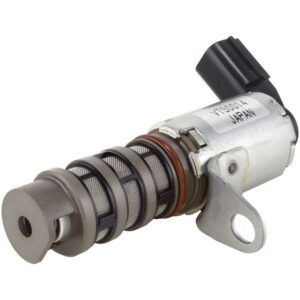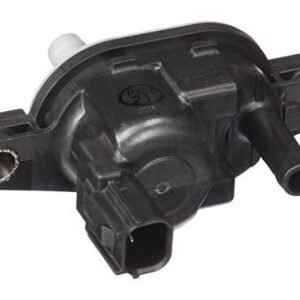Title: Valve Solenoid: Unveiling the Engine’s Dynamic Regulator
In the intricate network of an automotive engine, where precision and efficiency converge, the valve solenoid emerges as a dynamic regulator, orchestrating the delicate balance of fluid flow and pressure. Often overlooked but undeniably crucial, this unassuming component plays a pivotal role in ensuring optimal engine performance, fuel efficiency, and emissions control. In this blog, we’ll delve into the significance of the valve solenoid, how it works, its importance in engine operation, and its indispensable contribution to the driving experience.
### Understanding the Valve Solenoid
The valve solenoid, also known as the solenoid valve or control solenoid, is a critical component of the engine’s hydraulic or pneumatic systems in modern vehicles. Positioned within the engine or transmission, its primary function is to control the flow of fluids or gases by opening or closing a valve in response to electrical signals.
### How the Valve Solenoid Works
The valve solenoid operates based on electromagnetic principles. It consists of a coil of wire wrapped around a movable plunger or armature. When an electrical current is applied to the coil, it generates a magnetic field that attracts the plunger, causing it to move and open or close the valve. This process allows the solenoid to regulate fluid flow or pressure as needed for various engine functions.
### Importance of the Valve Solenoid in Engine Operation
1. **Variable Valve Timing (VVT) Control**: In engines equipped with variable valve timing systems, valve solenoids play a crucial role in adjusting valve timing and lift according to driving conditions. This optimizes engine performance, fuel efficiency, and emissions control by maximizing power delivery and minimizing fuel consumption.
2. **Transmission Shift Control**: In automatic transmissions, valve solenoids are responsible for controlling gear shifts by regulating hydraulic pressure to engage or disengage clutch packs or shift valves. This ensures smooth and precise gear changes, improving drivability and reducing wear on transmission components.
3. **Emissions Control**: Valve solenoids also play a vital role in emissions control by regulating the operation of systems such as the exhaust gas recirculation (EGR) valve or evaporative emissions (EVAP) system. By precisely controlling the flow of exhaust gases or fuel vapors, they help reduce harmful emissions and ensure compliance with environmental regulations.
### Signs of a Failing Valve Solenoid
– **Check Engine Light**: An illuminated check engine light on the dashboard may indicate a problem with the valve solenoid or related components.
– **Rough Shifting**: In automatic transmissions, rough or erratic shifting may occur if the valve solenoids responsible for controlling gear shifts are malfunctioning.
– **Engine Performance Issues**: Engine performance may be affected if valve solenoids controlling variable valve timing or emissions systems are not functioning properly.
– **Fluid Leaks**: Leaks around the solenoid valve or related components may indicate a failure of the seal or internal components.
### Conclusion
In the intricate tapestry of engine management and performance, the valve solenoid stands as a dynamic regulator, controlling the flow of fluids and gases with precision and accuracy. From optimizing variable valve timing to regulating transmission shifts and emissions control, the role of the valve solenoid in shaping engine performance and efficiency cannot be overstated. As automotive technology continues to advance, the importance of valve solenoids in achieving optimal engine operation remains undeniably critical, ensuring that vehicles navigate the roads with power, efficiency, and reliability.
In stock (can be backordered)
$18,926.31
Title: Valve Solenoid: Unveiling the Engine’s Dynamic Regulator
In the intricate network of an automotive engine, where precision and efficiency converge, the valve solenoid emerges as a dynamic regulator, orchestrating the delicate balance of fluid flow and pressure. Often overlooked but undeniably crucial, this unassuming component plays a pivotal role in ensuring optimal engine performance, fuel efficiency, and emissions control. In this blog, we’ll delve into the significance of the valve solenoid, how it works, its importance in engine operation, and its indispensable contribution to the driving experience.
### Understanding the Valve Solenoid
The valve solenoid, also known as the solenoid valve or control solenoid, is a critical component of the engine’s hydraulic or pneumatic systems in modern vehicles. Positioned within the engine or transmission, its primary function is to control the flow of fluids or gases by opening or closing a valve in response to electrical signals.
### How the Valve Solenoid Works
The valve solenoid operates based on electromagnetic principles. It consists of a coil of wire wrapped around a movable plunger or armature. When an electrical current is applied to the coil, it generates a magnetic field that attracts the plunger, causing it to move and open or close the valve. This process allows the solenoid to regulate fluid flow or pressure as needed for various engine functions.
### Importance of the Valve Solenoid in Engine Operation
1. **Variable Valve Timing (VVT) Control**: In engines equipped with variable valve timing systems, valve solenoids play a crucial role in adjusting valve timing and lift according to driving conditions. This optimizes engine performance, fuel efficiency, and emissions control by maximizing power delivery and minimizing fuel consumption.
2. **Transmission Shift Control**: In automatic transmissions, valve solenoids are responsible for controlling gear shifts by regulating hydraulic pressure to engage or disengage clutch packs or shift valves. This ensures smooth and precise gear changes, improving drivability and reducing wear on transmission components.
3. **Emissions Control**: Valve solenoids also play a vital role in emissions control by regulating the operation of systems such as the exhaust gas recirculation (EGR) valve or evaporative emissions (EVAP) system. By precisely controlling the flow of exhaust gases or fuel vapors, they help reduce harmful emissions and ensure compliance with environmental regulations.
### Signs of a Failing Valve Solenoid
– **Check Engine Light**: An illuminated check engine light on the dashboard may indicate a problem with the valve solenoid or related components.
– **Rough Shifting**: In automatic transmissions, rough or erratic shifting may occur if the valve solenoids responsible for controlling gear shifts are malfunctioning.
– **Engine Performance Issues**: Engine performance may be affected if valve solenoids controlling variable valve timing or emissions systems are not functioning properly.
– **Fluid Leaks**: Leaks around the solenoid valve or related components may indicate a failure of the seal or internal components.
### Conclusion
In the intricate tapestry of engine management and performance, the valve solenoid stands as a dynamic regulator, controlling the flow of fluids and gases with precision and accuracy. From optimizing variable valve timing to regulating transmission shifts and emissions control, the role of the valve solenoid in shaping engine performance and efficiency cannot be overstated. As automotive technology continues to advance, the importance of valve solenoids in achieving optimal engine operation remains undeniably critical, ensuring that vehicles navigate the roads with power, efficiency, and reliability.
| Warehouse | Inventory at warehouse 2 |
|---|



Get E-mail updates about our latest products and special offers.
Sensors and More is Jamaica’s ultimate online auto parts store. Established in 2020, we specialize in genuine electrical parts for Japanese, Read more…
Reviews
There are no reviews yet.